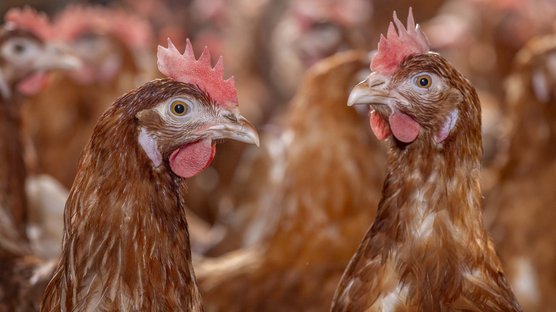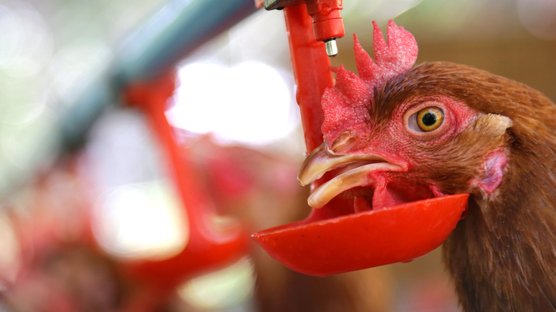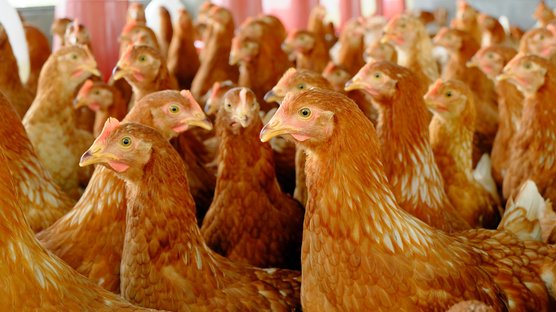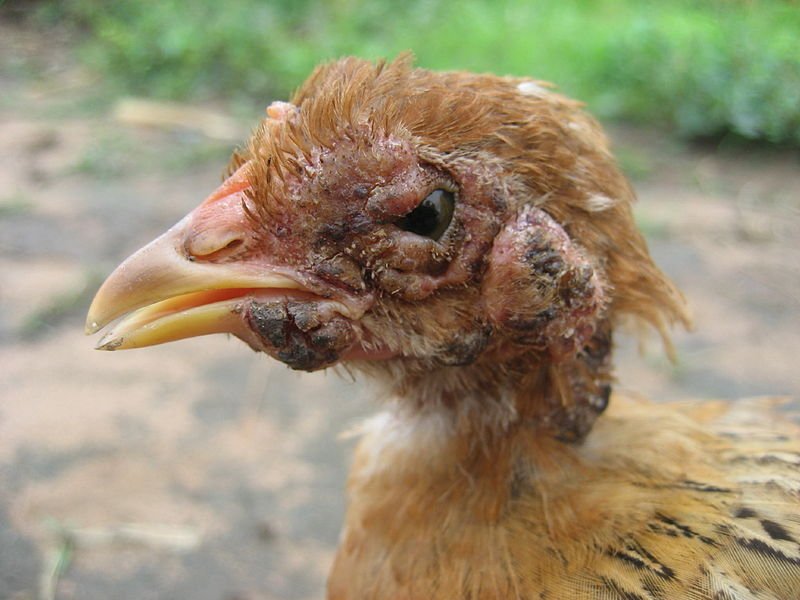
Published on Feb. 1, 2021
Fowlpox in Poultry
Fowlpox or Avian pox is a slow-spreading viral disease of chickens, causing proliferative nodular lesions or scabs around the head on the comb, eyelids and wattle (dry pox) and diphtheritic yellowish lesions in the mouth and in the upper part of the oesophagus and trachea (wet pox or fowl diphtheria).
The transmission is mechanical, either via direct bird to bird contact or via mosquitoes and other biting insects like fowl mite. Aerosol infection via dried scabs or feathers containing Fowl pox virus can also occur. In cage housing systems, the spread can be very slow.
Fowl pox is present all over the world, especially causing problems in tropical areas and in high density poultry areas with multi-age farm situations.
An immunosuppressive infection with Marek’s disease virus or with Chicken anaemia virus can make birds more susceptible for Fowl pox. Stress around transfer and start of production can also lower the immunity of the birds. Fowlpox virus (FWPV) is an Avipox virus, member of the Poxviridae family. It is a large DNA virus, very resistant to environmental conditions. FWPV can survive in dried scabs for months.FWPV also effects turkeys.
Clinical Signs
The lesions on the corner of the mouth, on the tongue, throat and upper part of the oesophagus and trachea interfere with eating, drinking and breathing, thus causing drops in egg production. Mortality normally is low.
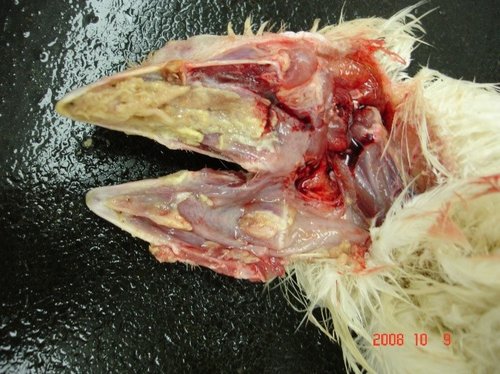

Diagnosis
The microscopic lesions (cytoplasmic inclusion bodies) are characteristic for the disease. Macroscopic lesions, especially of the diphtheritic form, can be confused with signs of Infectious laryngotracheitis or Coryza. The diagnose can be confirmed with a PCR test. PCR can also differentiate between field virus and vaccine virus.
Elisa is the first-choice test for serology.
Control & Vaccination
Good biosecurity, proper cleaning and disinfection and control of biting insects will lower the infection pressure of FWPV. Vaccination is the second stage of defence. Normally, chickens are vaccinated between 12-16 weeks of age, by wing-web puncture. In areas with high infection pressure, an extra vaccination is applied at early age. Sometimes, Pox vaccine is administered in the hatchery, mixed with Marek’s vaccine.
Maternal derived antibodies can interfere with the vaccine take. Already immune birds will also not react, but most common reason for pour vaccine take is improper vaccine application. The vaccine take should be checked 7-10 days post vaccination; a scab must be visible at the injection site. Emergency vaccinations can be used in an early stage of infection to prevent further spread. A recent new development are the live Pox-vectored recombinant vaccines.
References
- Diseases of Poultry 14th Edition. Deoki N. Tripathy and Willie M. Reed.
- MSD Veterinary Manual. Deoki N. Tripathy.
- Main picture: Ton Rulkens

